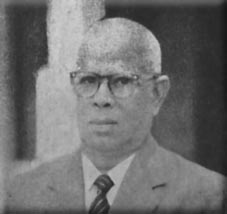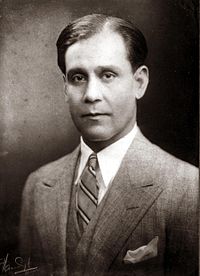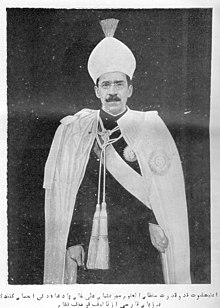Making of India as we know it
How many princely states were in India at the time of Independence?
 |
| V P Menon |
They were so many in number that historians are not even in agreement about their number. Some histroians claim 521, while others say 565. But certainly they were more than 500 and varied widely
in terms of size and status. Kashmir and Hyderabad were larger in size than many countries of the world whereas some were just combination of dozen of villages. British created many proposals which allowed them to control many important aspect of Indian princely states like military, succession at a hefty fee without taking any responsibility of welfare of its people. (Parallels may be drawn to last government where Manmohan Singh was prime minister while decisions were taken somewhere else.) These states had their own railways, currency and stamps, but as aptly pointed by one British observer,"The states were sinks of reaction and incompetence and unrestrained autocratic power sometimes exercised by vicious and deranged individuals". Indian National Congress was more or less shared the same view.
Congress had assigned the problem of states to the pragmatic administrator Vallabhbhai Patel. He threw a series of lunch parties, where he urged his princely guests to help the congress in framing a new constitution of India. And at the same time, Patel wrote to influential chief ministers of the princely states urging them to convince their rulers to come to terms with the party which would now rule India. One of the first princes to come over to Patel's side was Maharaja of Bikaner. His dewan was K. M. Pannikar who could see that force of nationalism was irrestible. And if one did not compromise with them, one would be swept away. On 27 June, a new States department was set up by the government of India under the leadership of Sardar Patel. He chose V. P. Menon as his secratry who had, unlike other secretaries to Governemnt of India fromIndian Civil Service, joined the governemnt of India as a clerk and steadily worked his way up. Credentials of V. P. Menon included his role as reforms commissioner and constitutional adviser to successive viceroys, and
his key role in drafting the Indian Independence Bill.
On July 5, Patel issued a statement appealing to the princes of India to accede to the Indian Union by transferring control of defence, foreign affairs and communications to the congreess government. Mountbatten was a key player in the whole effort. Mahatma Gandhi, Nehru and Patel met viceroy Mountbatten and asked him to bat for them against the states. This he did effectively by advising them to forge raltions with the new nation closest to them. As author Ramchandra Guha puts his act,"In my opinion it ranks as the most significant of all his acts in India. It finally pursauded the princes that Bristish would no longer protect or patronize them, and that Independence for them was a mirage." By 15th of August virtually all the states had signed the instrument of Accession. Meanwhile the popular sentiment of people was for full democratic government in the state. Patel used the threat of popular protest to make the princes fall in line. They had already acceded; now they were being asked to integrate, that is to dissolve their states as independent entities and merge with Union of India. In exchange they can keep their titles and an allowance will be paid to them. V. P. Menon describes in detail the torturous negotiations with the rulers. One ruler claimed descent from Lord Rama, another from Sri Krishna. In exchange of their land, each rulerwas offered a 'privy purse', its size proportional to the revenue earned by the state.
Travancore's dewan (chief minister) made clear as early February, 1946 that after British, Travancore would became a 'perfectly independent unit'. Travancore was located at the southern tip of the subcontinent, it had the most highly educated populace in India, a thriving maritime trade, and newly discovered reserves of monazite. One other state was Bhopal. Nawab of Bhopal was a bitter opponent of congress. He communicated with Lord Mountbatten reminding him of Baroda's devotion to His Majesty's Government and asked for his support for independent Baroda. At last Nawab asked viceroy to press Patel to extend the deadline by 10 days so that his accession would be announced after 15th August. By the way, Nawab of Bhopal is maternal grandfather of Mansoor Ali Khan Pataudi, former captain of Indian cricket team as well as Sharayar Khan, former foreign Secretary of Pakistan and great grand father to Saif Ali Khan and Soha Ali Khan. One another funny case was of Jodhpur. Where Maharaja of Jodhpur was supposedly convinced that since his state shares border with Pakistan, he could get better deal with that dominion. Some say that Jinnah handed over a blank sheet to Maharaja and asked him to fill the conditions himself.
in terms of size and status. Kashmir and Hyderabad were larger in size than many countries of the world whereas some were just combination of dozen of villages. British created many proposals which allowed them to control many important aspect of Indian princely states like military, succession at a hefty fee without taking any responsibility of welfare of its people. (Parallels may be drawn to last government where Manmohan Singh was prime minister while decisions were taken somewhere else.) These states had their own railways, currency and stamps, but as aptly pointed by one British observer,"The states were sinks of reaction and incompetence and unrestrained autocratic power sometimes exercised by vicious and deranged individuals". Indian National Congress was more or less shared the same view.
Congress had assigned the problem of states to the pragmatic administrator Vallabhbhai Patel. He threw a series of lunch parties, where he urged his princely guests to help the congress in framing a new constitution of India. And at the same time, Patel wrote to influential chief ministers of the princely states urging them to convince their rulers to come to terms with the party which would now rule India. One of the first princes to come over to Patel's side was Maharaja of Bikaner. His dewan was K. M. Pannikar who could see that force of nationalism was irrestible. And if one did not compromise with them, one would be swept away. On 27 June, a new States department was set up by the government of India under the leadership of Sardar Patel. He chose V. P. Menon as his secratry who had, unlike other secretaries to Governemnt of India fromIndian Civil Service, joined the governemnt of India as a clerk and steadily worked his way up. Credentials of V. P. Menon included his role as reforms commissioner and constitutional adviser to successive viceroys, and
his key role in drafting the Indian Independence Bill.
On July 5, Patel issued a statement appealing to the princes of India to accede to the Indian Union by transferring control of defence, foreign affairs and communications to the congreess government. Mountbatten was a key player in the whole effort. Mahatma Gandhi, Nehru and Patel met viceroy Mountbatten and asked him to bat for them against the states. This he did effectively by advising them to forge raltions with the new nation closest to them. As author Ramchandra Guha puts his act,"In my opinion it ranks as the most significant of all his acts in India. It finally pursauded the princes that Bristish would no longer protect or patronize them, and that Independence for them was a mirage." By 15th of August virtually all the states had signed the instrument of Accession. Meanwhile the popular sentiment of people was for full democratic government in the state. Patel used the threat of popular protest to make the princes fall in line. They had already acceded; now they were being asked to integrate, that is to dissolve their states as independent entities and merge with Union of India. In exchange they can keep their titles and an allowance will be paid to them. V. P. Menon describes in detail the torturous negotiations with the rulers. One ruler claimed descent from Lord Rama, another from Sri Krishna. In exchange of their land, each rulerwas offered a 'privy purse', its size proportional to the revenue earned by the state.
Travancore's dewan (chief minister) made clear as early February, 1946 that after British, Travancore would became a 'perfectly independent unit'. Travancore was located at the southern tip of the subcontinent, it had the most highly educated populace in India, a thriving maritime trade, and newly discovered reserves of monazite. One other state was Bhopal. Nawab of Bhopal was a bitter opponent of congress. He communicated with Lord Mountbatten reminding him of Baroda's devotion to His Majesty's Government and asked for his support for independent Baroda. At last Nawab asked viceroy to press Patel to extend the deadline by 10 days so that his accession would be announced after 15th August. By the way, Nawab of Bhopal is maternal grandfather of Mansoor Ali Khan Pataudi, former captain of Indian cricket team as well as Sharayar Khan, former foreign Secretary of Pakistan and great grand father to Saif Ali Khan and Soha Ali Khan. One another funny case was of Jodhpur. Where Maharaja of Jodhpur was supposedly convinced that since his state shares border with Pakistan, he could get better deal with that dominion. Some say that Jinnah handed over a blank sheet to Maharaja and asked him to fill the conditions himself.

Nawab of Bhopal
Juagadh consisted of mainly Hindu population ruled by a Muslim king. The Nawab decided to accede to Pakistan which afterd few days Pakistan agreed to. Though It made little sense geographically as well as culturally. Sardar Patel supported Hindu chiefs of Junagadh who wanted to join India. He suppoerted them with a small military. Samaldas Gandhi led provisonal government of Junagadh was set up in Bombay. This 'government' became the vehicle of popular agitation against the Nawab. In panic, Nawab fled to Pakistan and Indians organized a plebiscite with 91% percent of the electorate voting for accession to India. Its important to mention that Nawab of Junagadh is known for his pioneering effort to save Asiatic Lions.
 |
| Nawab of Juagadh |
Hyderabad was another state which did not accede to any of the two dominions as of 15th August 1947. Nizam controlled the 10% of the land of Hyderabad and he earned around Rs 25 million from his land holdings as well as 5 millions from the state treasury. He was one of the richest man of the world but also one of the most miserly. He was usually dressed in unironed pyjama and shirt and a faded fez. He never offered any kind of hospitality to a visitor and drove in an old car.There were three party in Hyderabad's causse; Hyderabad State Congress which sought Hyderabad to join India; Communista Party of Indiawhich ran a parallel government in many parts of Hyderabad. They first siezed all holding in access of 500 acres, bringing the limit down to 200 and then 100 acres; The third party was Ittihad-ul-Muslimeen which was loyal to Nizam and founded to safeguard the muslim
pride in Deccan. Kasim Rizvi was the leader of Ittihad. Ittihad promoted a paramilitary body called the 'Razakars', whose members marched up and down the roads of Hyderabad, carrying swords and gun.Nawab was encouraged by Coservative party of Britain. They presented Congress as Hitler and Hyderabad as Poland and wanted to protect the interest of their loyal friend Nizam. In late november 1947, Nizam signed a 'Standstill Agreement' under which agreement between Hyderabad and British Raj would be continued with its successor government. On 21st June 1948, Lord Mountbatten resigned from office of governor general. Many requests and mediators failed to change the mind of Nizam. on 13th of September, a contingent of Indian troops was sent to Hyderabad. In less than 4 days, they had control of full Hyderabad. Later, Nizam was rewarded for his final submission by being made governor of new Indian state of Hyderabad.
On the concluding note, Guha says that Patel's guiding hand was indeed wise and sure. Even Nehru might not have supervised the princes extinction with such patience and foresight. But he could not have done his job woithout V.P Menon who made hundreds of trips to the chiefdoms.
pride in Deccan. Kasim Rizvi was the leader of Ittihad. Ittihad promoted a paramilitary body called the 'Razakars', whose members marched up and down the roads of Hyderabad, carrying swords and gun.Nawab was encouraged by Coservative party of Britain. They presented Congress as Hitler and Hyderabad as Poland and wanted to protect the interest of their loyal friend Nizam. In late november 1947, Nizam signed a 'Standstill Agreement' under which agreement between Hyderabad and British Raj would be continued with its successor government. On 21st June 1948, Lord Mountbatten resigned from office of governor general. Many requests and mediators failed to change the mind of Nizam. on 13th of September, a contingent of Indian troops was sent to Hyderabad. In less than 4 days, they had control of full Hyderabad. Later, Nizam was rewarded for his final submission by being made governor of new Indian state of Hyderabad.
On the concluding note, Guha says that Patel's guiding hand was indeed wise and sure. Even Nehru might not have supervised the princes extinction with such patience and foresight. But he could not have done his job woithout V.P Menon who made hundreds of trips to the chiefdoms.
 |
| Nizaam of Hyderabd |
This blog post is based on the third chapter of "India After Gandhi" by Ramchandra Guha.



Comments